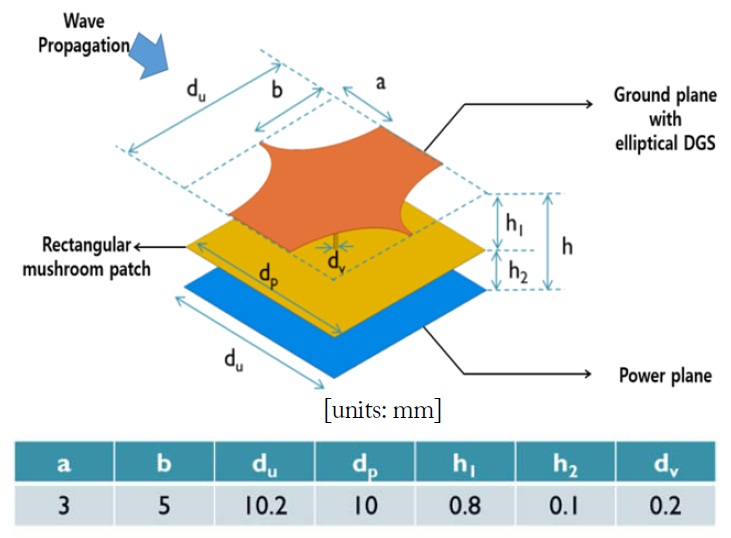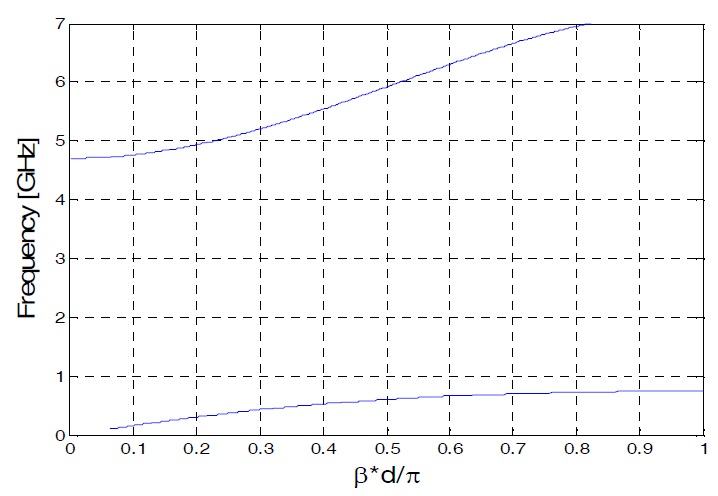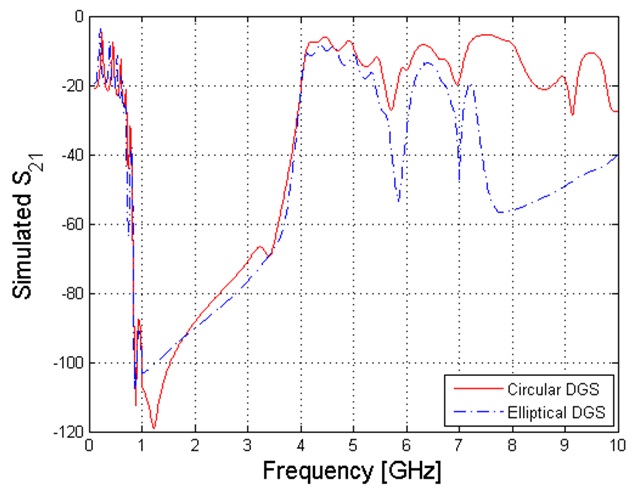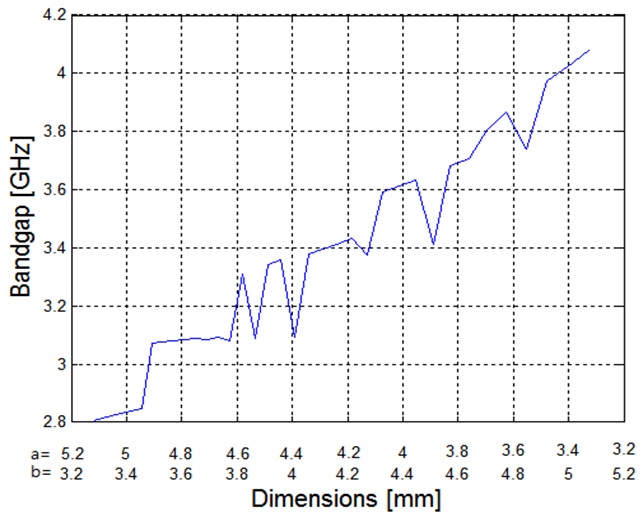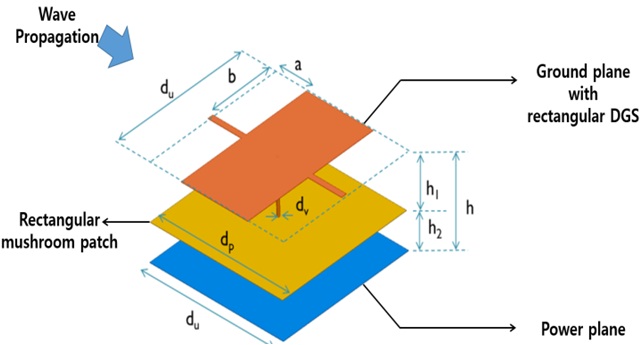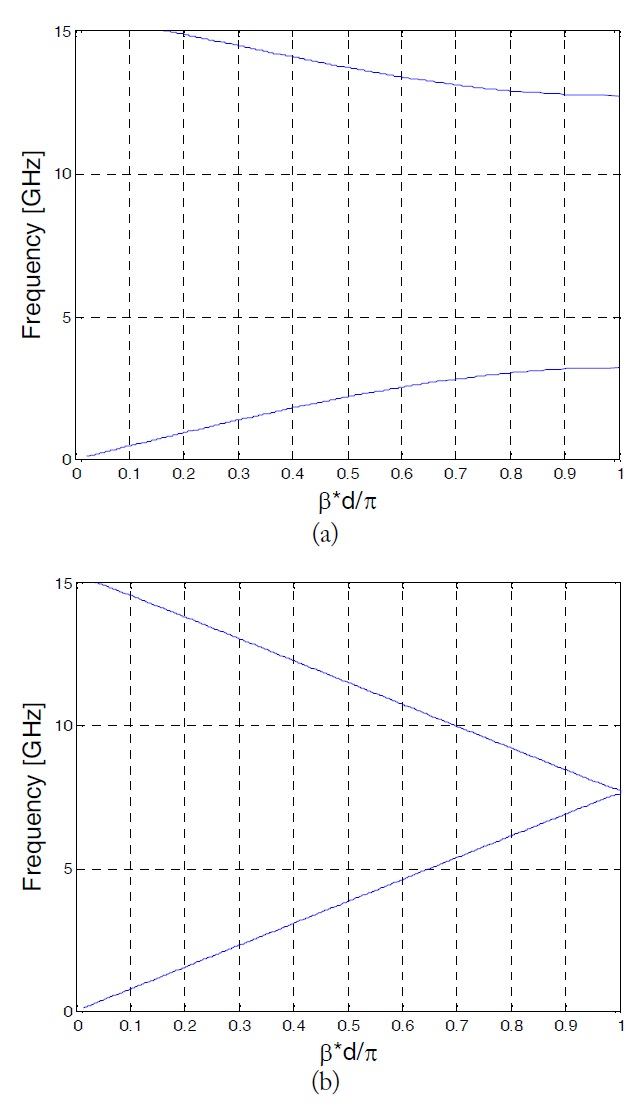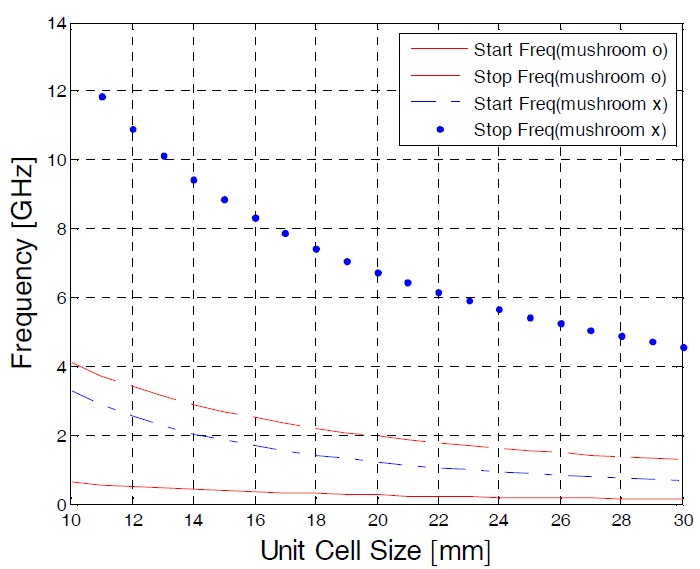



In high-speed printed circuit boards (PCBs), the propagation of power/ground (P/G) noise causes a significant degradation of signal integrity. Today, data rates are continuously increasing, so noise coupling through the P/G planes occurs over a wide range of frequencies. Therefore, wideband suppression of P/G noise coupling is an essential requirement for high-speed PCBs. Electromagnetic bandgap (EBG) structures have emerged as an effective solution because they have wide stopband bandwidths, high stopband attenuation, and are easily integrated with PCBs [1]. Various techniques have been proposed to improve the noise-suppression characteristics while minimizing the size of EBG structures; these include the use of high dielectric constant materials, multivia structures, cascaded EBG cells, and defected ground structures (DGSs) [1]. The employment of DGSs has a distinctive advantage over the other methods: design modifications (i.e., removing a part of a ground plane) add no cost.
In [2], circular DGS patterns are proposed for further improvement of the stopband bandwidth with a smaller perforation area. An analytical model is also presented to determine the bandgap characteristics of the proposed structure. The method proposed in the present study involves the segmentation of a transmission line with an arbitrary characteristic impedance into multiple sections so that the characteristic impedance can be regarded as a linear function of
II. OPTIMIZATION OF DGS SHAPES
The proposed analytical method considers two lower quasi-TEM modes and estimates the start and stop bandgap frequencies (
Fig. 1 shows a mushroom-type EBG structure with elliptical DGS patterns. It consists of three metal layers: a dedicated power plane (bottom), EBG patches (middle), and an elliptical DGS (top). An FR-4 substrate is used as a dielectric material (
Next, the dimensions (
Two rectangular DGS patterns are then compared to determine whether the same principle applies to other DGS shapes, as shown in Figs. 5 and 6: one with
Next, we change the unit cell size (
We extend the analytical method presented in [2] to explore a variety of DGS shapes in the search for better stopband characteristics. The data presented here do not necessarily represent the optimum achievable bandgap performance for each DGS pattern; however, the analysis procedure provides a basis for numerical optimization techniques that can be used in synthesizing DGS shapes that will meet existing bandgap requirements and layout constraints.
